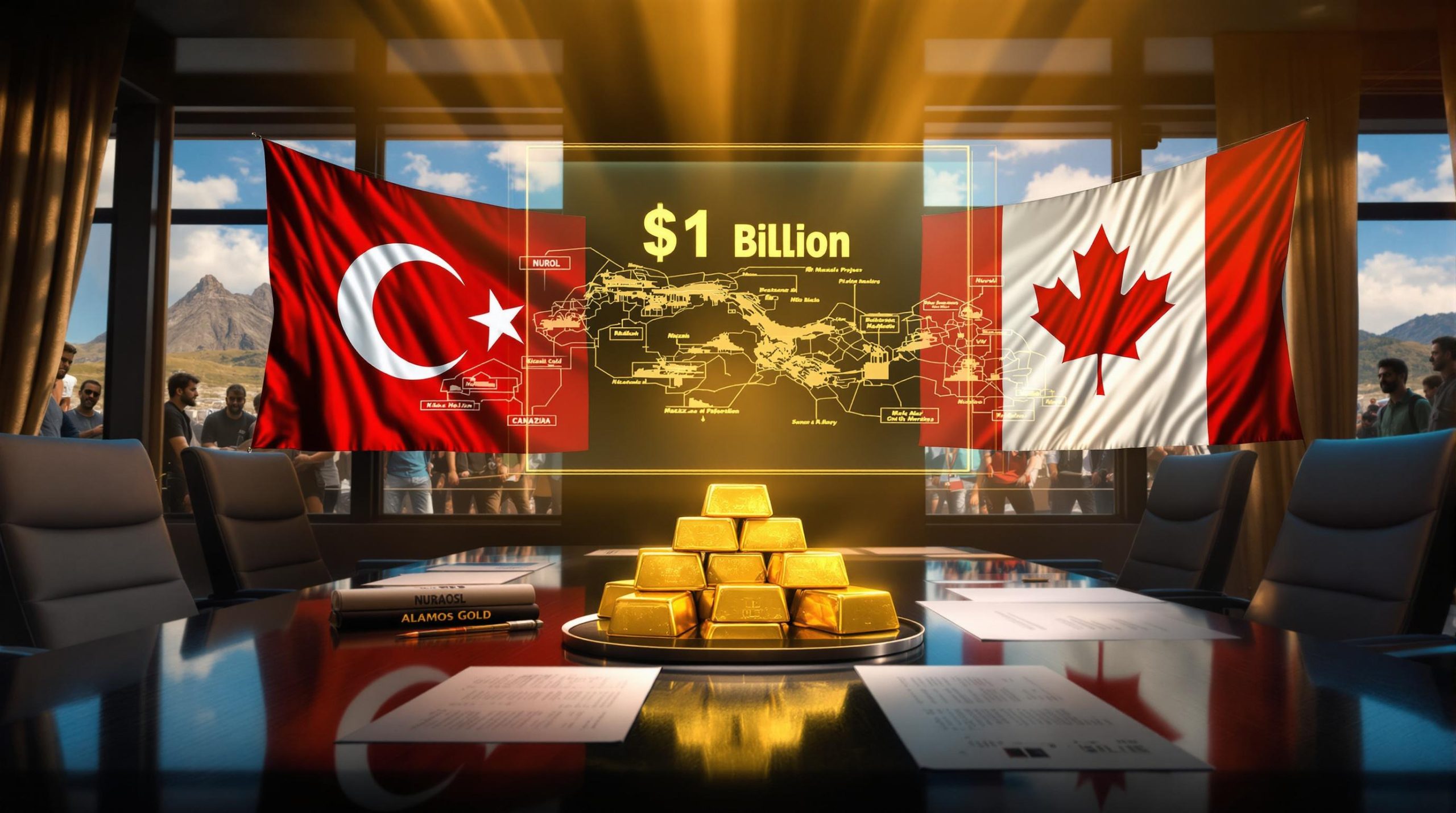Understanding Section 232 Tariffs and Their Strategic Purpose
Section 232 tariffs represent a powerful trade policy tool rooted in national security concerns. Established under the Trade Expansion Act of 1962, these measures allow the U.S. President to impose restrictions on imports deemed threatening to American national security. Unlike other trade mechanisms such as anti-dumping duties or Section 301 tariffs (which address unfair trade practices), Section 232 measures specifically target materials considered essential for military readiness, critical infrastructure, and technological superiority.
In recent years, these tariffs have evolved from rarely-used policy instruments to central components of America's resource security strategy. The current administration has significantly expanded their application to section 232 tariffs on critical metals—reflecting growing concerns about supply chain vulnerabilities and resource competition with strategic rivals.
The implementation of these tariffs marks a fundamental shift in global trade dynamics. What began with aluminum and steel has expanded to encompass a broader spectrum of metals deemed critical to national security, industrial capacity, and technological advancement.
The Shift Toward a "Wartime Economy" Mindset
Global metal markets are increasingly exhibiting characteristics reminiscent of resource competition during periods of international conflict. As Daniel Gari, Senior Commodity Strategist at TD Securities, observes: "Every day we are inching closer to a wartime economy… The United States is incentivizing stockpiling of metal, while China's stockpiling has more strategic cues. Global inventory pools are being bled dry."
This wartime economy approach manifests through several observable trends:
- Strategic stockpiling: Major economies are rapidly accumulating critical metals reserves
- Export restrictions: Producer nations are limiting outflows of strategic resources
- Onshore production incentives: Governments are subsidizing domestic mining and refining
- Inventory fragmentation: Regional metal holdings are becoming disconnected from global pools
The consequences of this shift extend beyond price volatility. Traditional metal inventory balancing mechanisms—where materials flow to regions of highest demand and price—are breaking down due to export controls, tariffs, and geopolitical tensions. This fragmentation creates regional scarcity even when global supplies appear adequate on paper.
Critical Metals Under Section 232 Scrutiny
The current focus of Section 232 investigations centers on what TD Securities terms the "critical caps"—a group of metals with both industrial and strategic importance:
- Copper: Essential for electrical systems, renewable energy, and defense applications
- Aluminum: Crucial for aerospace, transportation, and packaging
- Platinum & Palladium: Critical for emissions control systems and hydrogen technologies
- Silver: Vital for electronics, solar panels, and medical applications
These metals share characteristics that make them particularly vulnerable to supply disruptions: concentrated production geographies, complex refining requirements, limited substitutes, and growing demand from both traditional and emerging technologies.
Copper: The Leading Indicator
Copper markets provide a revealing window into how Section 232 tariffs reshape global metal flows. With tariffs set to take effect on August 1st, copper price insights have reached record highs while inventories have plummeted to multi-year lows across major exchanges.
The metal's response to tariff announcements demonstrates several important dynamics:
- Preemptive importing: U.S. buyers have accelerated purchases ahead of implementation dates
- Regional price disparities: Premium spreads between U.S. and international markets have widened
- Inventory redistribution: Metal has moved from international warehouses to domestic stockpiles
- Structural repricing: Base price floors have elevated as supply constraints appear permanent
Market analysts increasingly view these shifts not as temporary disruptions but as evidence of a structural repricing driven by fragmented global trade. The copper market's reaction serves as a bellwether for how other critical metals may respond to similar trade measures.
Silver's Exceptional Performance
Among the critical metals, silver presents perhaps the most striking case of supply constraint and price response. The metal recently hit 14-year highs amid dramatically depleted inventories. According to Gari, London Bullion Market Association (LBMA) silver stocks have fallen to approximately 155 million ounces—a fraction of the daily trading volume of 250 million ounces.
This precarious inventory situation reflects silver's unique position at the intersection of:
- Industrial demand: Growing requirements for electronics, solar panels, and medical applications
- Investment interest: Increasing allocation in portfolios seeking inflation protection
- Supply limitations: Declining primary silver production and constrained byproduct output
- Market fragmentation: Regional inventory imbalances between trading hubs
"The financialization of silver… in the United States is inhibiting physical flows. This will keep London scarce and could cause a silver market squeeze." —Daniel Gari, TD Securities
The unprecedented situation in silver markets—where New York inventories remain relatively robust while London faces critical shortages—illustrates how regional metal flows have become distorted by market structures, financialization, and trade barriers.
Global Powers' Responses to Critical Metal Scarcity
The implementation of Section 232 tariffs represents just one element of a broader transformation in how major powers approach resource security. Both consuming and producing nations are adopting increasingly assertive measures to secure access to critical metals.
China's Strategic Metal Export Controls
China has systematically tightened control over its domestic metal resources through a series of export restrictions targeting rare earths, gallium, germanium, and other critical materials. These measures followed what market observers termed the "Liberation Day tariffs"—a reference to U.S. trade actions that prompted retaliatory measures.
The impact of China's export controls has been profound:
- Rare earth metals have outperformed both industrial and precious metal baskets
- Processing bottlenecks have emerged as manufacturers scramble for alternative supplies
- Price premiums for Chinese-origin materials have expanded dramatically
- Western nations have accelerated funding for domestic rare earth development projects
These restrictions align with China's broader strategic objectives: maintaining technological advantages, securing leverage in trade negotiations, and protecting resources for domestic industries. The policy has proven effective at both raising global prices and highlighting Western vulnerabilities in critical minerals energy security.
US Preemptive Metal Importing Strategies
In response to anticipated supply constraints, U.S. entities have engaged in accelerated metal imports ahead of tariff implementation dates. This strategic stockpiling has created several notable market distortions:
- Inventory location shifts: Metal movements from international to domestic warehouses
- Forward buying pressure: Compressed purchasing timelines elevating spot prices
- Regional premium expansion: Widening price gaps between U.S. and international markets
- Transportation bottlenecks: Logistical constraints as importers race to beat deadlines
The August 1st implementation date for copper tariffs has triggered particularly aggressive buying patterns. This preemptive importing strategy may provide temporary relief for domestic consumers but ultimately contributes to global inventory fragmentation and price volatility.
Investment Implications of Metal Market Fragmentation
The fragmentation of global metal markets creates both challenges and opportunities for investors. Understanding how traditional inventory systems are breaking down provides insight into potential price trajectories and investment strategies.
Global Inventory System Fragmentation
For decades, global metal markets functioned as effectively interconnected systems where physical material flowed relatively freely to areas of highest demand. This balance is now fundamentally disrupted, with several important consequences:
- Regional inventories no longer reliably indicate global availability
- Price signals fail to trigger normal arbitrage mechanisms
- Physical premiums expand beyond transportation and financing costs
- Apparent global surpluses can coexist with acute regional shortages
This fragmentation particularly affects metals with centralized trading hubs. Silver provides the clearest example, with inventories accumulating in New York while London faces critical shortages. The disconnect stems from U.S. financialization (particularly ETF demand) trapping metal within American borders while trade frictions prevent efficient redistribution.
Signs of Extreme Scarcity in Platinum Group Metals
Platinum and palladium markets exhibit severe supply constraints driven by multiple factors:
- Production challenges: South African mining disruptions, processing bottlenecks
- Inventory depletion: Exchange stocks at historically low levels
- Resilient demand: Automotive catalyst requirements remain strong despite higher prices
- Limited substitution: Technical requirements prevent easy material substitution
Gari notes that these metals "are already showing signs of extreme scarcity… These products have to repric[e] on the basis of that scarcity." The investment case for platinum group metals rests on this fundamental supply-demand imbalance, amplified by trade restrictions and market fragmentation.
The Unusual Case of Silver Markets
Silver's current market dynamics present a fascinating case study in fragmentation effects. Despite functioning as a global commodity, silver now trades with significant regional disparities. LBMA inventories have fallen to approximately 155 million ounces—barely half of daily trading volume—while COMEX stocks remain relatively robust.
This unusual situation stems from silver's dual role:
- Industrial material: Essential for electronics, solar panels, and medical applications
- Investment asset: Growing allocation in portfolios seeking inflation protection
The metal's price has reached 14-year highs in response to these structural imbalances. More significantly, the disruption of normal inventory balancing mechanisms suggests potential for further price volatility or even physical market squeezes in regions experiencing acute scarcity.
Positioning Strategies for Critical Metal Supply Constraints
Investors seeking to capitalize on—or protect against—the implications of Section 232 tariffs and broader metal market fragmentation have several potential approaches to consider.
Key Dates and Catalysts to Monitor
Strategic positioning requires awareness of upcoming policy milestones that could trigger market reactions:
- August 1st implementation: Copper tariffs take effect
- Ongoing Section 232 investigations: Potential expansion to additional metals
- Retaliatory measures: Trading partner responses to U.S. tariffs' investment impact
- International summit meetings: Potential trade negotiations or agreements
- Quarterly production reports: Mining company output trends in critical metals
These events may serve as inflection points for metal prices or catalysts for broader market repricing. The implementation of copper tariffs represents the most immediate trigger, with potential ripple effects across related metals and manufacturing sectors.
Portfolio Positioning Strategies
Investors can approach the critical metals space through multiple vehicles, each offering different risk-reward profiles:
Direct Metal Exposure:
- Physical metal ownership (bars, coins)
- Exchange-traded products (ETFs, ETNs)
- Futures contracts (requires sophisticated understanding of contract structure)
Producer Equity Considerations:
- Primary producers with assets in politically stable jurisdictions
- Companies with integrated operations (mining through refining)
- Producers with advanced recycling capabilities
- Explorers with significant critical metal discoveries
Supply Chain Positioning:
- Midstream processors and refiners
- Component manufacturers with price pass-through provisions
- Technology companies with secured supply agreements
Geographical diversification remains crucial in this environment. Companies operating in jurisdictions with supportive mining policies, stable regulatory frameworks, and reliable infrastructure may command premiums as regional supply constraints intensify.
Long-term Structural Implications
The current metal market dynamics reflect a profound shift in the global resource landscape. As Gari observes, "We are transitioning from decades of resource abundance to strategic scarcity… Higher raw material prices are structural."
This transition carries several important implications for long-term investors:
- Pricing environment: Raw material costs likely to remain elevated
- Substitution acceleration: Research into alternatives will intensify
- Processing innovation: New technologies to improve metal recovery and recycling
- Geopolitical realignment: Resource partnerships reshaping international relations
- Supply chain reconfiguration: Companies prioritizing security over efficiency
Investors should balance tactical opportunities against this strategic backdrop, recognizing that short-term price volatility exists within a longer-term structural shift toward resource competition and higher commodity value baselines.
FAQ: Section 232 Tariffs and Critical Metals
What exactly are Section 232 tariffs and how do they differ from other trade measures?
Section 232 tariffs derive authority from the Trade Expansion Act of 1962, which allows the President to adjust imports based on national security concerns. This distinguishes them from other trade measures:
- Section 301 tariffs: Target unfair trade practices by specific countries
- Antidumping duties: Address below-market pricing by foreign producers
- Countervailing duties: Counter foreign government subsidies
- Quotas: Limit the quantity of imports rather than imposing fees
The national security focus of Section 232 gives the administration broader discretion and fewer international trade organization constraints compared to other mechanisms. Implementation requires a Department of Commerce investigation and determination that imports threaten to impair national security—a threshold that has been interpreted increasingly broadly in recent years.
Which specific metals are classified as "critical" under current US policy?
The U.S. Geological Survey maintains an official critical minerals list that has expanded significantly in recent years. The current list includes over 50 minerals considered essential to economic or national security and vulnerable to supply disruption.
Beyond the "critical caps" (copper, aluminum, platinum, palladium, silver) discussed in this article, key metals on the list include:
- Rare earth elements: Neodymium, praseodymium, dysprosium, terbium
- Battery metals: Lithium, cobalt, nickel, graphite, manganese
- Semiconductor materials: Gallium, germanium, indium, arsenic
- Aerospace alloy components: Titanium, vanadium, rhenium, hafnium
The classification methodology considers three primary factors: importance to economic and national security, supply chain vulnerabilities, and potential consequences of supply disruption. This framework results in regular updates to the critical minerals list as technological requirements and geopolitical conditions evolve.
How might Section 232 tariffs affect consumer prices for everyday products?
The price impact of metal tariffs varies significantly by product category, depending on several factors:
- Metal content percentage in final product cost
- Substitution possibilities for affected materials
- Value chain complexity and pass-through mechanisms
- Market competition and pricing power
- Inventory positions ahead of tariff implementation
Products with high metal content relative to overall value face the most direct price pressure. Historical examples from the 2018 aluminum tariffs showed beverage container costs rising 3-5%, while construction materials saw increases of 5-10% in certain categories.
Consumer electronics, appliances, and vehicles typically experience more modest percentage increases due to metal costs representing a smaller portion of overall value. However, the absolute dollar impact can be substantial for high-ticket items like automobiles, where metals account for thousands of dollars in production costs.
Navigating the New Era of Strategic Metal Scarcity
Key Takeaways for Investors
The transformation of global metal markets through Section 232 tariffs and related trade measures creates a fundamentally different investment landscape:
- Market fragmentation disrupts traditional price discovery and inventory balancing
- Regional scarcity can develop despite adequate global production
- Price floors are resetting higher across critical metals categories
- Supply chain reconfiguration prioritizes security over efficiency
- Resource nationalism is intensifying among both producers and consumers
This environment rewards investors who understand the structural nature of current metal market dynamics rather than viewing them as cyclical fluctuations. The transition from resource abundance to strategic scarcity represents a paradigm shift that will likely persist regardless of political administration changes or economic cycles.
As critical metals become increasingly central to both traditional and emerging technologies, their strategic importance will only grow. Investors positioning ahead of this recognition may find significant opportunities in what appears to be a fundamental repricing of resources essential to modern economies and national security.
The implementation of section 232 tariffs on critical metals doesn't merely represent a trade policy adjustment—it signals a profound shift in how nations approach resource security in an era of technological competition and supply chain vulnerability. Trump executive order on critical minerals further emphasizes this strategic approach to resource management. Understanding this transition provides crucial context for investment decisions across multiple asset classes and time horizons.
Looking for the Next Major Mining Discovery?
Discover significant mineral announcements before the market with Discovery Alert's proprietary Discovery IQ model, delivering real-time ASX mining alerts that transform complex data into actionable investment insights. Explore Discovery Alert's dedicated discoveries page to understand how major mineral discoveries have historically generated substantial returns for early investors.




